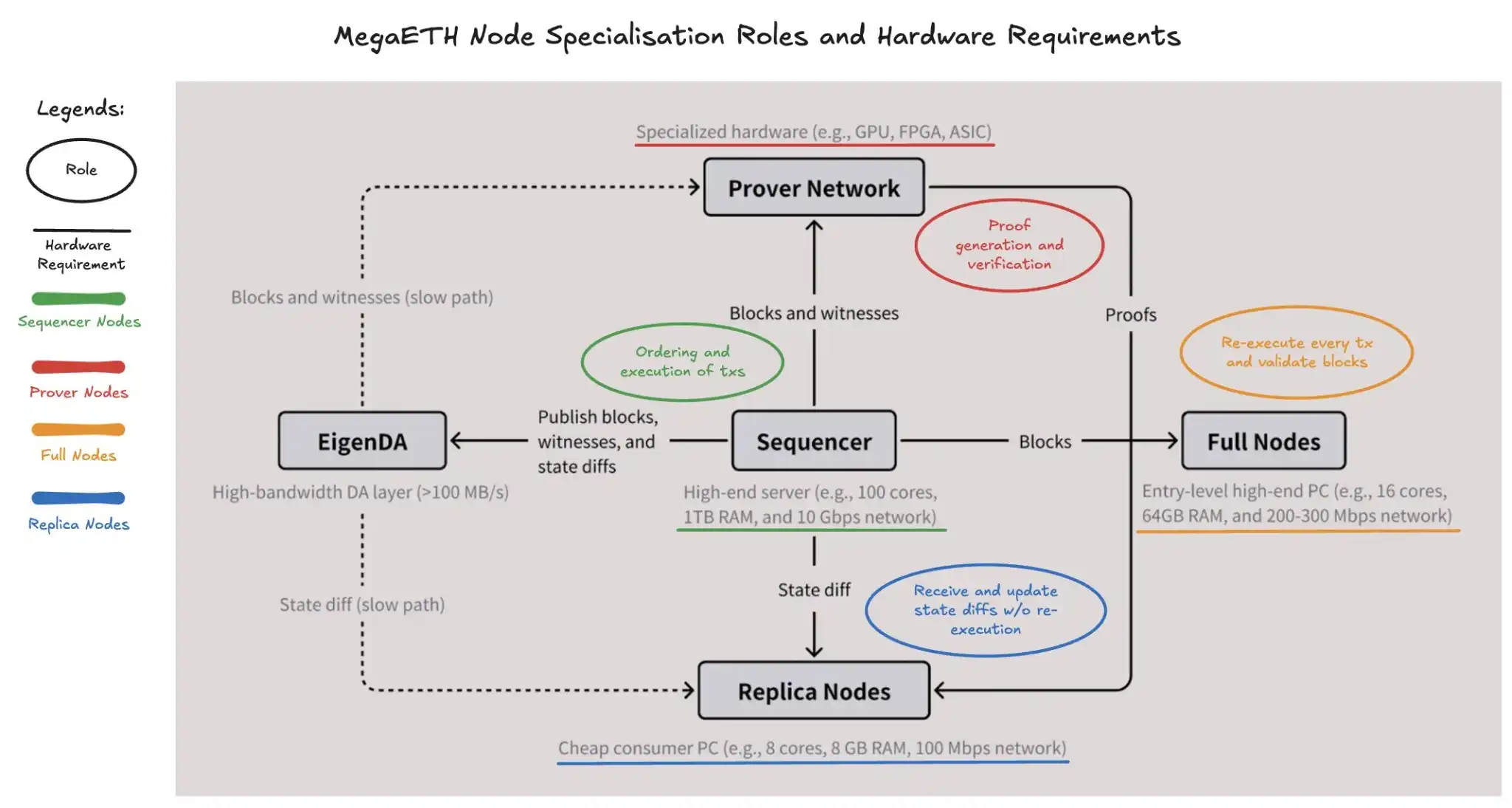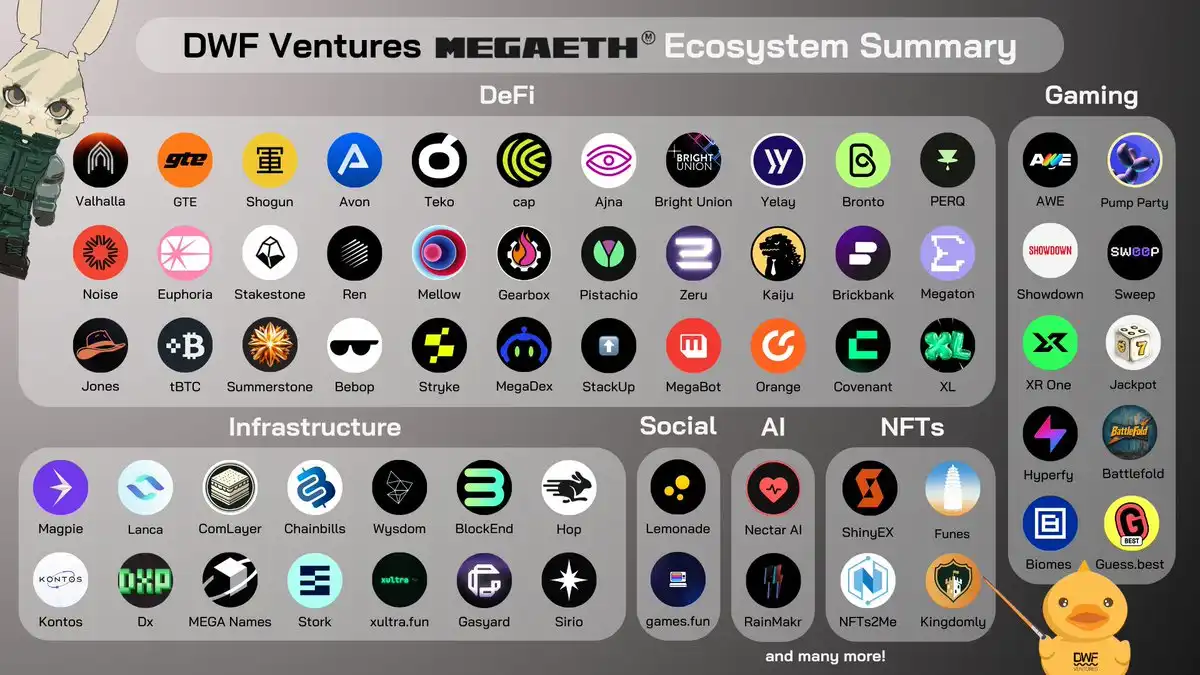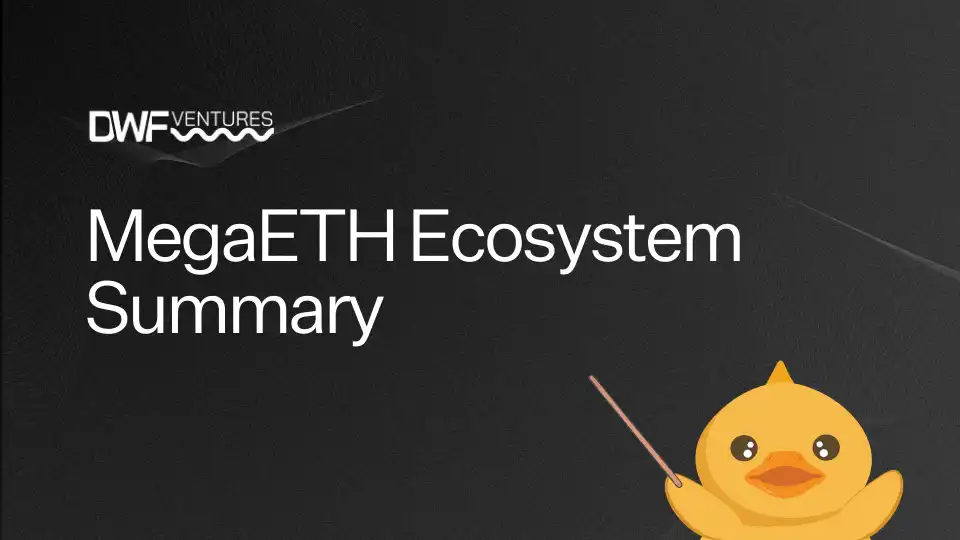The arrival of MegaETH public testnet marks a new chapter for EVM-compatible Layer 2 (L2) protocols, such as Base, Blast or based rollups, in 2025. With public access to its testnet now open, the project promises up to 20,000 transactions per second (TPS) and blocktimes as low as 10 milliseconds — a major leap in performance. A mainnet launch is on the horizon, so the question arises: what makes MegaETH different, and which projects are already taking advantage? DWF Ventures dived in.
Introduction
To understand why MegaETH is special, we need to begin with what it fundamentally is. Built as an Ethereum L2, MegaETH bridges the gap between blockchain infrastructure and the speed and flexibility of traditional cloud computing. Its core differences include not just high transaction throughput but also abundant computing resources and real-time processing capabilities — laying the groundwork for entirely new types of applications.
Node Specialisation

One of the defining innovations behind MegaETH is node specialisation. Unlike traditional blockchain models where every node is responsible for all network tasks, MegaETH separates these roles into distinct functions: Sequencer, Prover, Full, and Replica nodes. Each is optimised for its specific job, reducing inefficiencies and dramatically improving scalability without compromising on decentralisation.
There are four main node types in the MegaETH network:
- Sequencer Nodes: high-end servers (e.g., 100 cores, 1TB RAM, 10 Gbps network) that order and execute transactions, then publish blocks, witnesses, and state diffs to the rest of the system. They form the real-time processing backbone of the L2.
- Prover Nodes: these rely on specialised hardware like GPUs, FPGAs, or ASICs to generate and verify zero-knowledge proofs. They’re crucial for proving the validity of transactions and ensuring the integrity of the network.
- Full Nodes: These act as verifiers of the system; using high-end consumer-grade PCs (e.g., 16 cores, 64GB RAM), they re-execute all transactions and validate blocks, ensuring that everything published by sequencers and provers checks out.
- Replica Nodes: Lightweight participants that use cheap, accessible consumer PCs (e.g., 8 cores, 8GB RAM). These nodes receive and update state diffs without having to re-execute transactions — helping decentralise data availability and improve redundancy.
Inspired by Ethereum’s “Endgame” Vision
This architecture aligns closely with concepts proposed in Vitalik Buterin’s "Endgame" vision for Ethereum. He argues that while block production may become more centralised (since it needs powerful hardware), we can still keep blockchains trustless and open by making block validation easy and decentralised. This can be done using tools like fraud proofs, ZK-SNARKs, and data availability sampling so that anyone can verify that blocks are valid without needing to process everything themselves. MegaETH puts these ideas into practice with specialised node roles, making it easier for more people to join the network and help keep it secure. It’s a real-world example of how Ethereum rollups can scale without losing their core values of decentralisation and censorship resistance.
Performance Boosts
But node specialisation was just the beginning. MegaETH also introduces performance-boosting features such as Just-in-Time (JIT) compilation, which speeds up smart contract execution, and a reimagined state trie that allows data to scale without additional cost. These upgrades aren’t just technical — they represent a step-change in capability, laying a foundation for serious mainstream adoption.
And that brings us to the ecosystem already forming around MegaETH. The platform’s architecture has empowered builders across sectors to develop applications previously thought impossible on-chain. From finance to gaming, MegaETH’s flexibility is already unlocking real innovation.
Ecosystem

In DeFi, projects like Noise are introducing markets where trends themselves become tradable assets, driven by collective mindshare. In infrastructure, Hop Network is developing a fully on-chain VPN optimised for privacy and ultra-low latency — pushing the boundaries of privacy, speed, and security.
When it comes to gaming and entertainment, Pump Party supports live, interactive gameshows where users can livestream, chat, and win real prizes — all on-chain. Meanwhile, Lemonade is building an all-in-one platform for on-chain event creation and community management, tapping into the growing demand for decentralised social tools.
The rise of AI and digital identity also finds a home here. Nectar AI lets users craft AI companions tailored to their imagination, while Funes serves as an on-chain museum, preserving 3D models of the physical world and building a living digital archive.
Testnet Participation
Developers and users can already experience this ecosystem firsthand on the MegaETH testnet, which is live and growing. While not all advanced features are fully activated yet, the testnet allows for high-load testing and exploration of the core functionality that will define the mainnet. It’s a promising sandbox for the performance to come.
Conclusion
With the next wave of Ethereum scaling unfolding before us, MegaETH stands out not just for its throughput but for its thoughtful architecture and real-world readiness. This isn’t just faster infrastructure. It’s the infrastructure for the next generation of applications.
DWF Ventures Investments
As MegaETH accelerates toward launch, DWF Ventures is actively tracking its development. We’re interested in teams that are pushing the boundaries of what’s possible with Web3 technology. If you are building something interesting, feel free to reach out to us.



